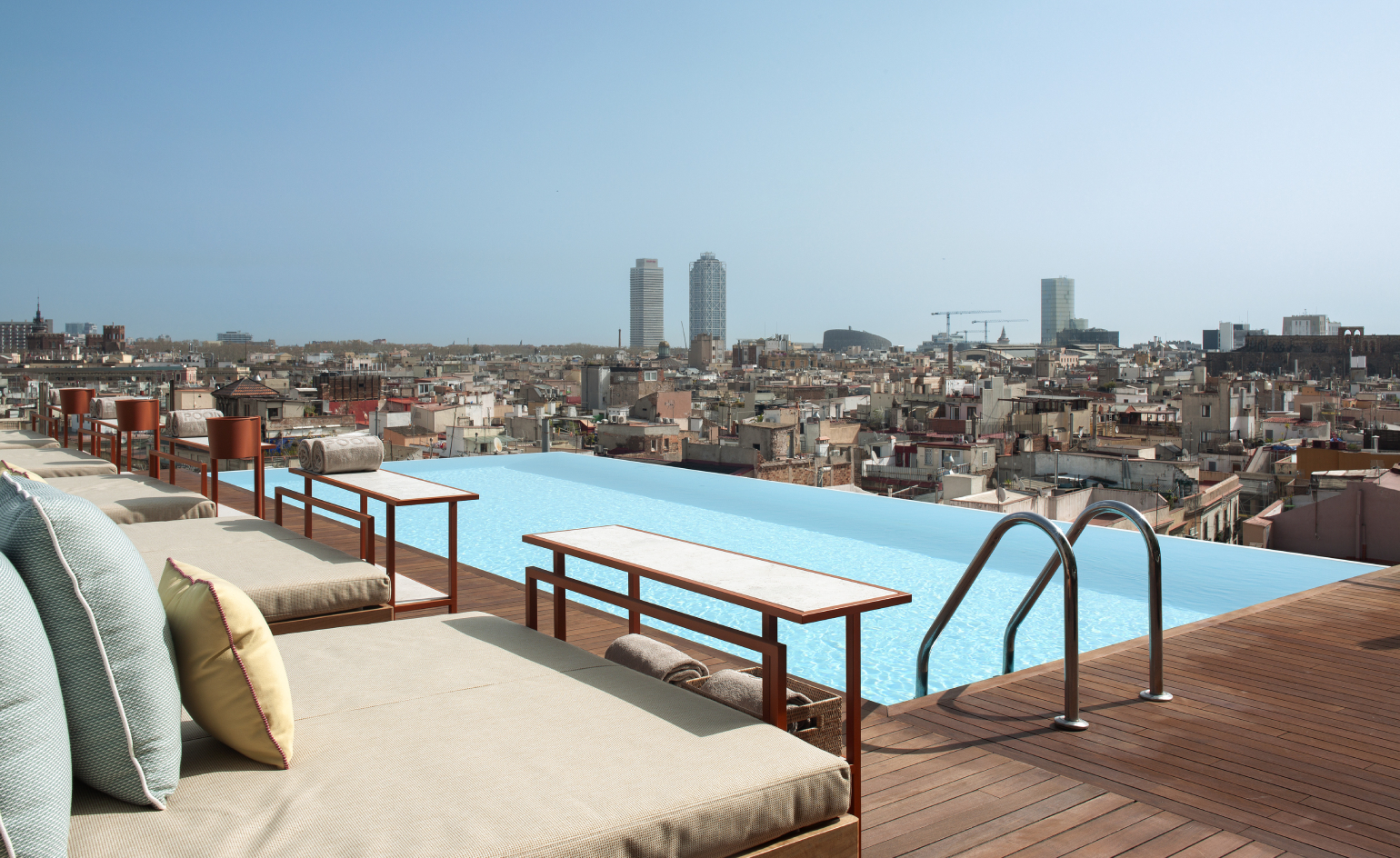
Although Barcelona is mostly famed for the organic, ornamental architecture of Catalan Modernisme, a countermovement called Noucentisme also emerged in the early 20th century, instead championing values of reason, order and clarity. In contrast with the bohemian wave of Modernisme pioneered by Gaudí and his peers, the Noucentista style rejected indulgently decorative aesthetics in favour of a classicist approach to design that was rational and sober.
Tour the Grand Hotel Central, Barcelona
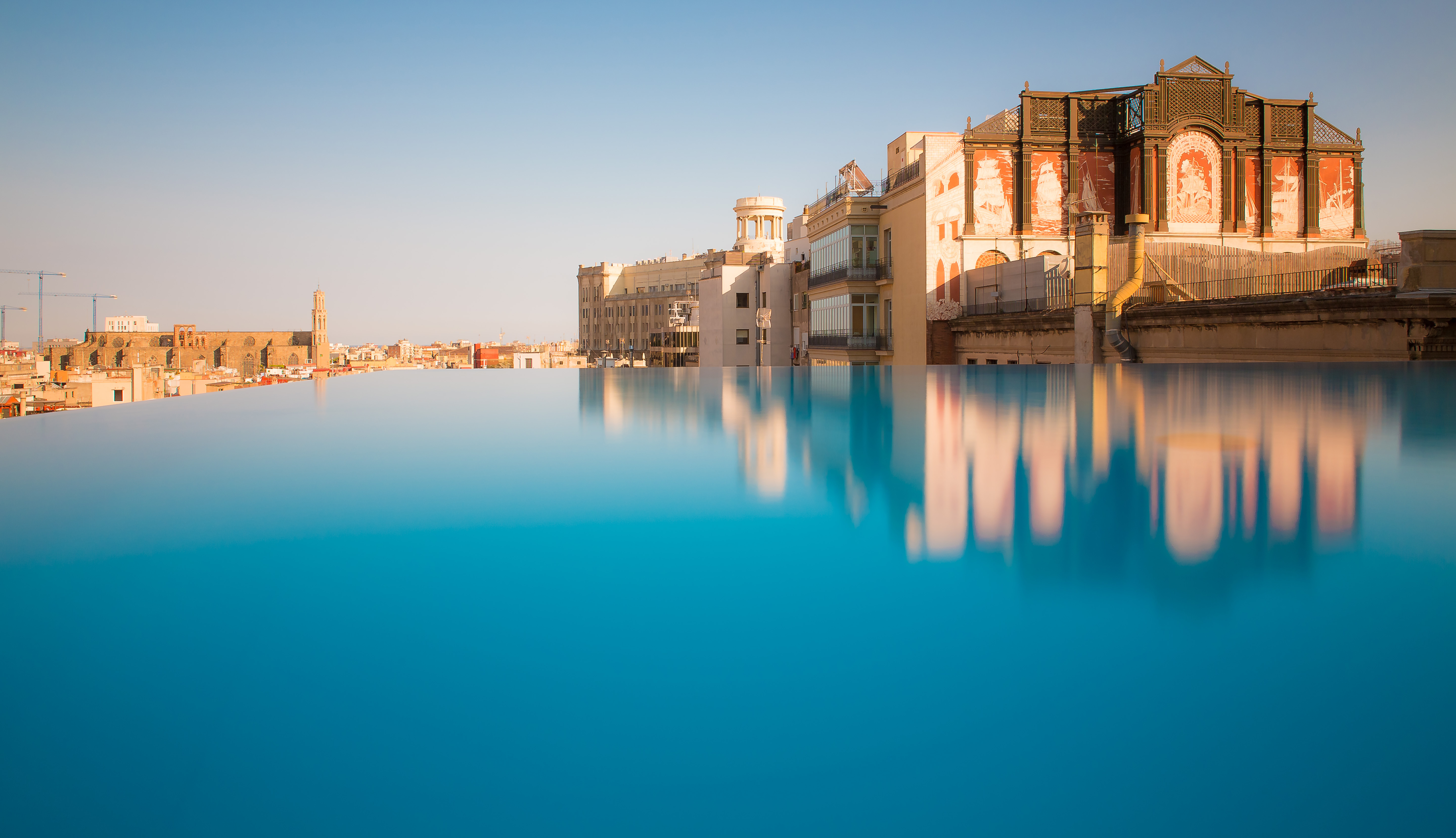
This was the style that appealed most to Francesc Cambó, a wealthy politician and philanthropist who commissioned the architect Adolf Florensa to design a seven-storey building on Barcelona’s Via Laietana in 1926. Today, it’s the Grand Hotel Central, which London-based studio Sagrada has redesigned for its opening under new ownership this summer – and the original owner’s residence and private rooftop garden remain at the top.
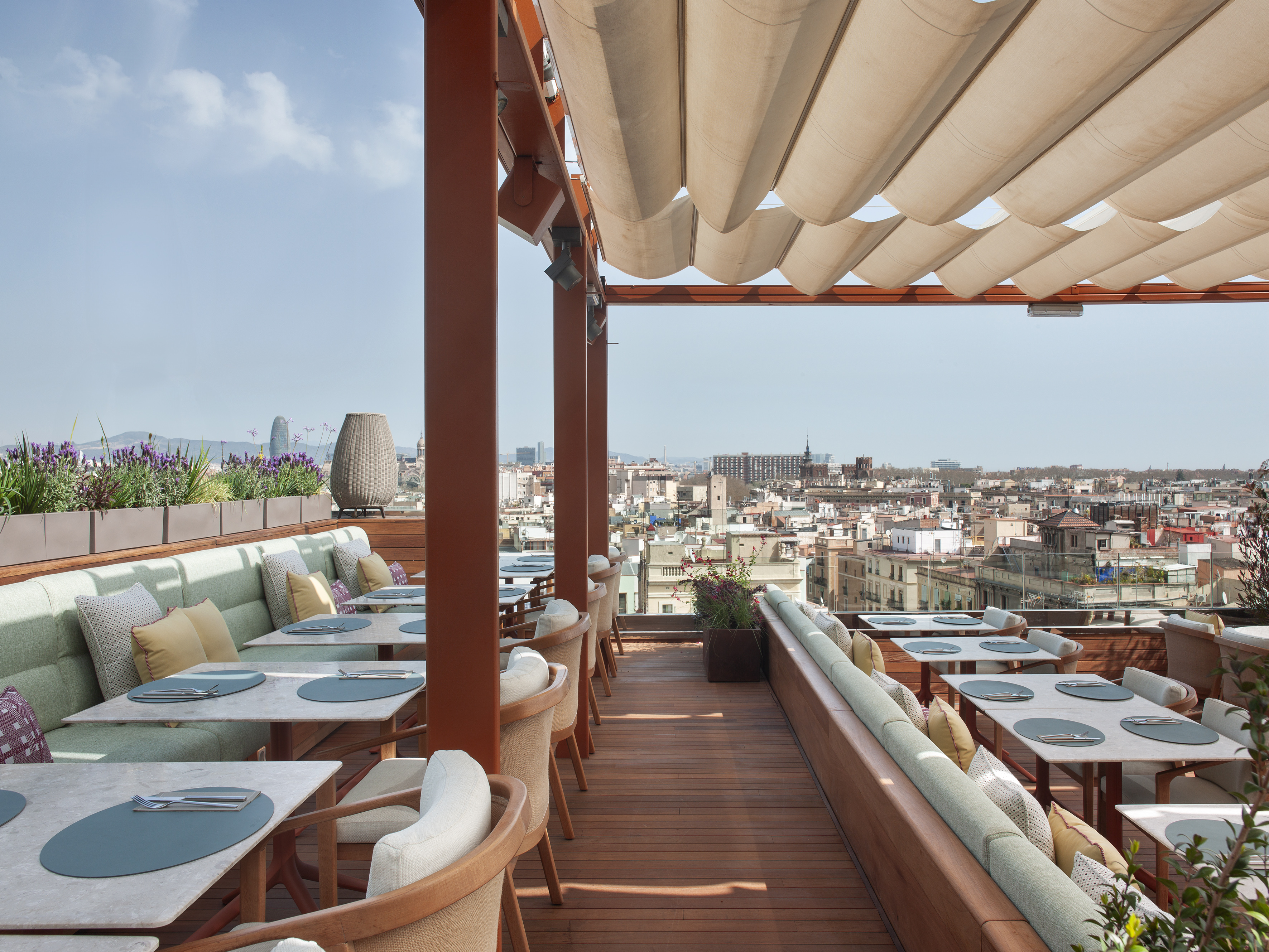
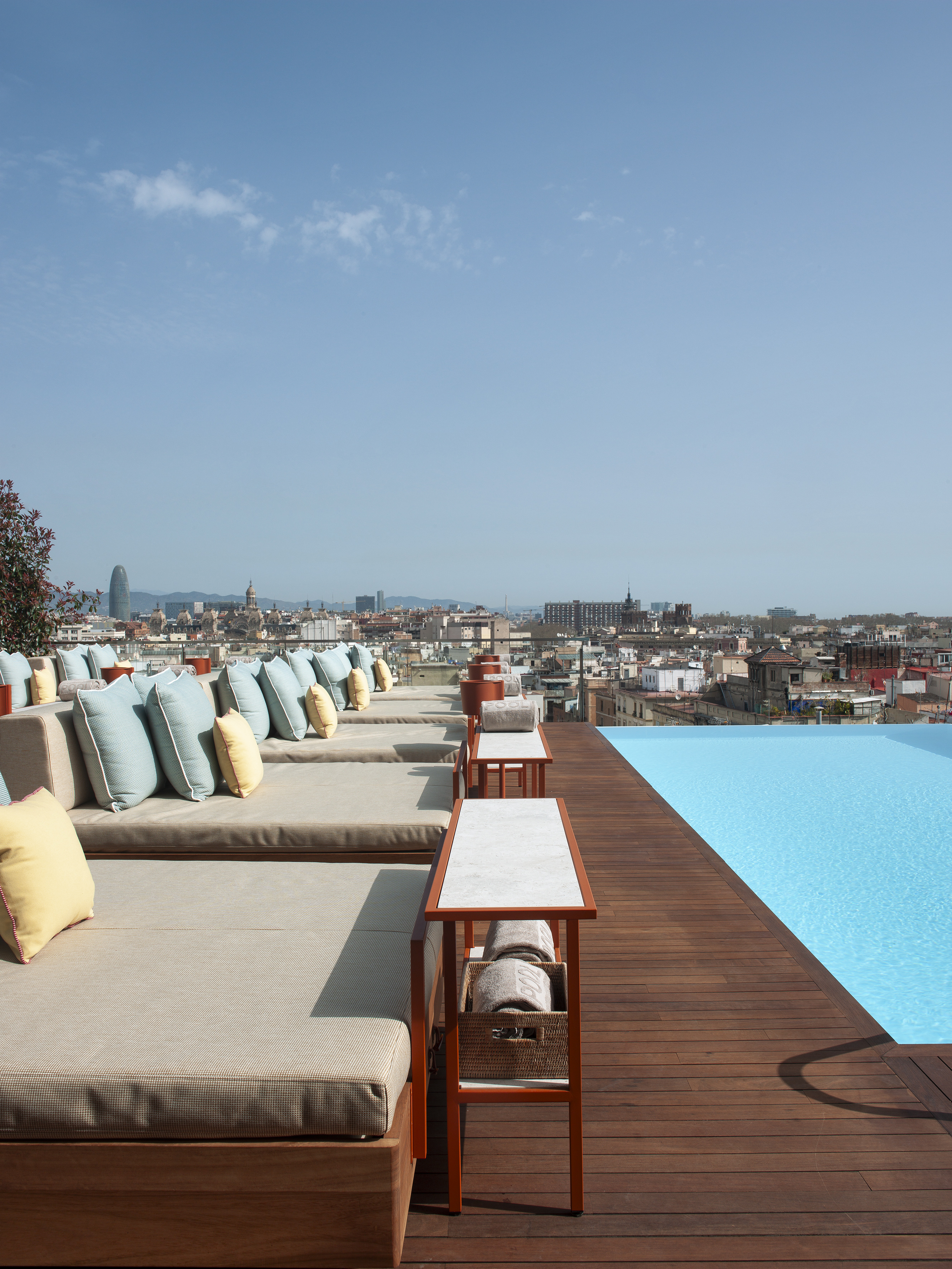
Believed to have been Barcelona’s first building with a lift, it’s also among the very few in the city influenced by the Chicago School of Architecture. Sagrada’s director, Juan Álvarez says he sees this in elements like the simplicity of the facade (unlike heavily decorated facades of Modernista buildings) featuring multiple wide windows in a grid arrangement.
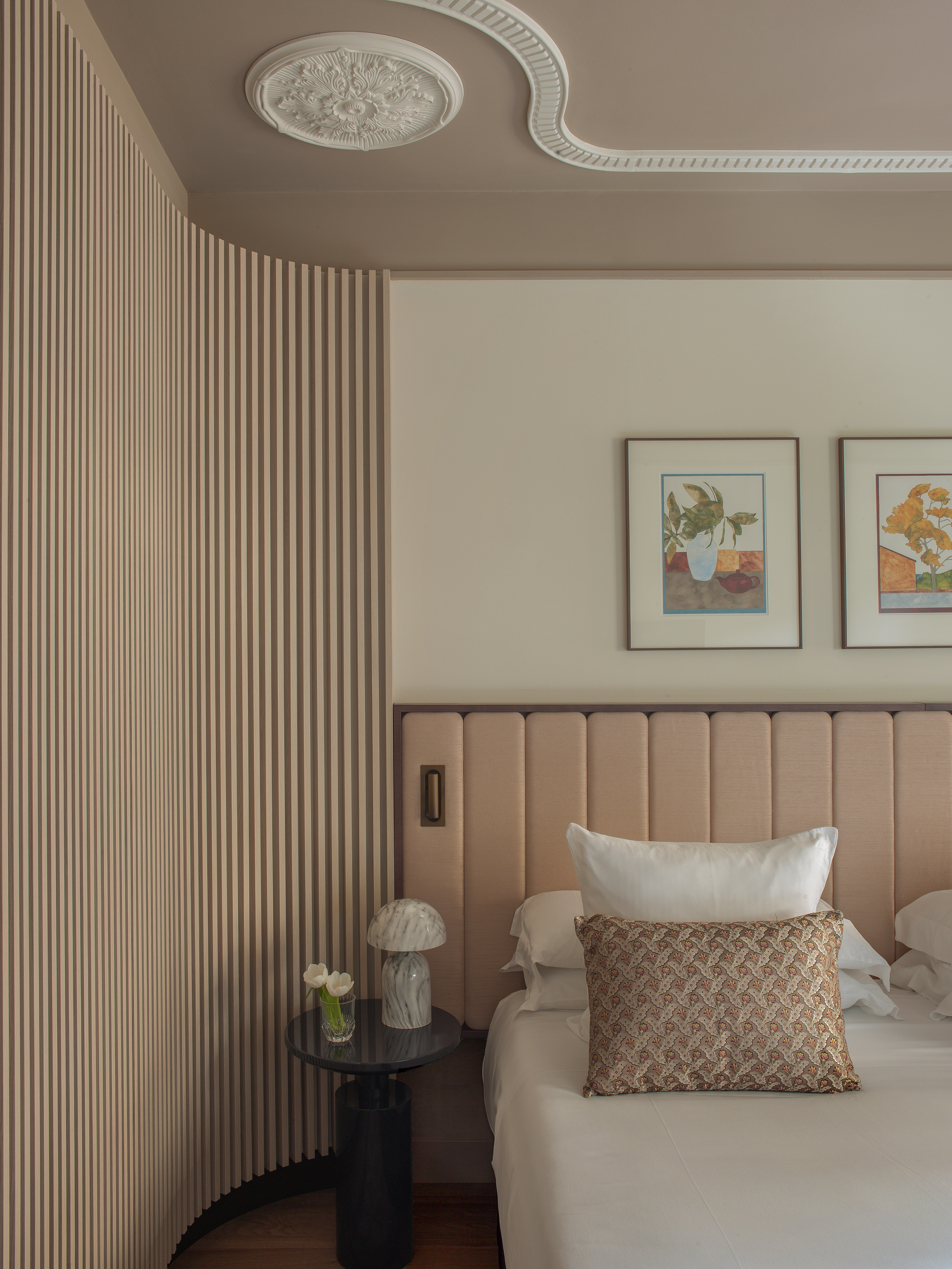
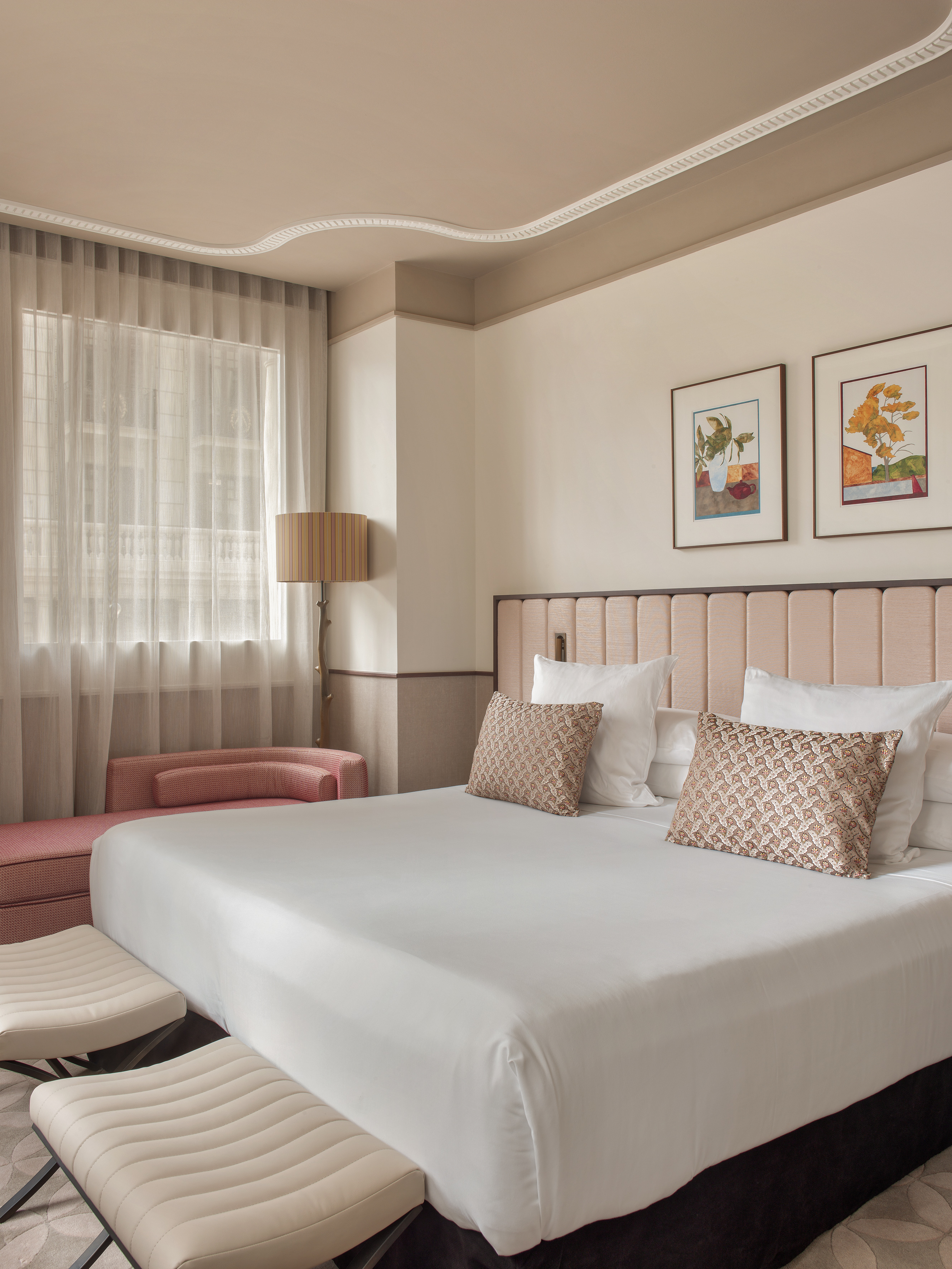
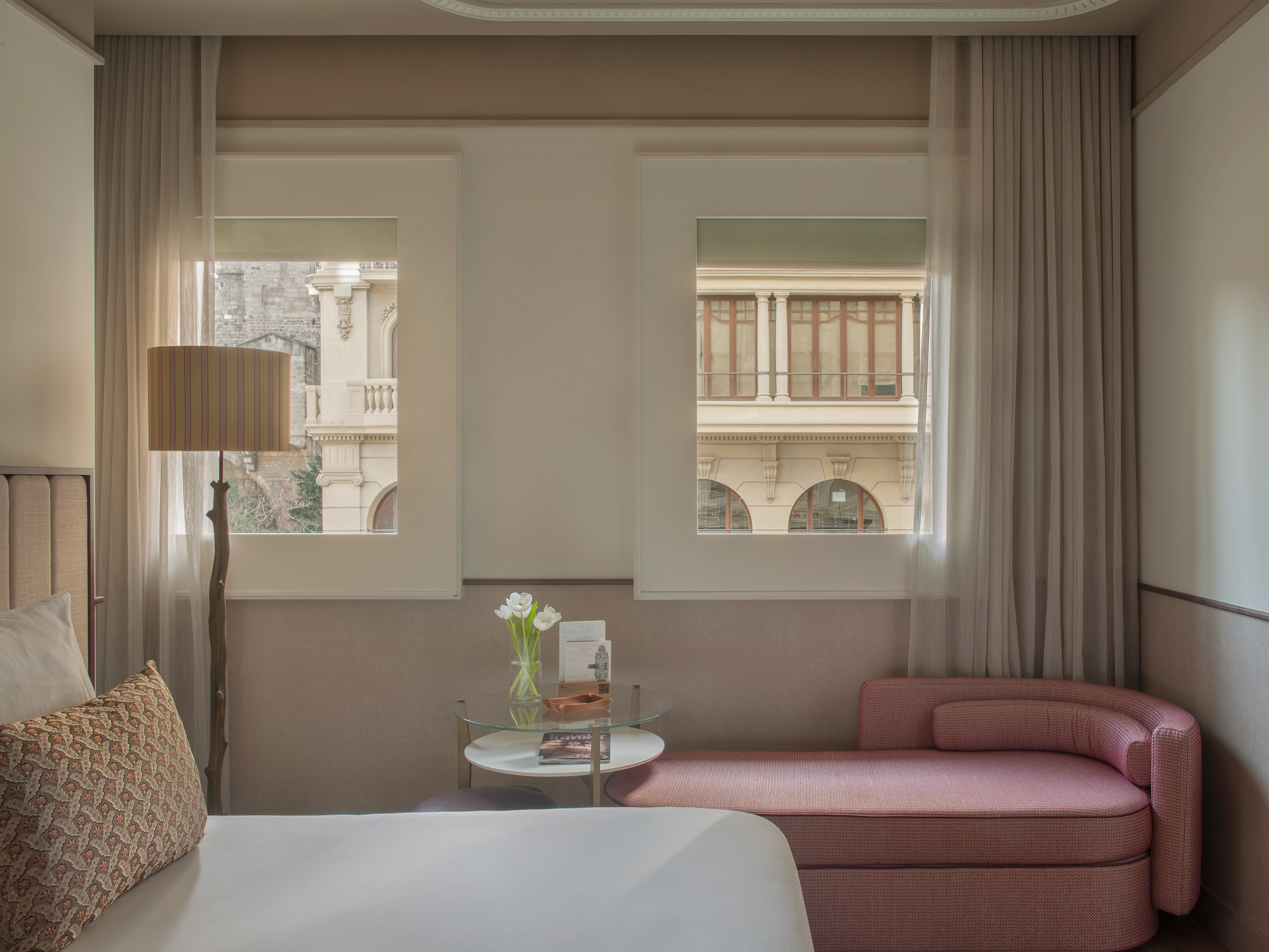
The designers at Sagrada – known for their work on London’s Arts Club and the St Regis Hotel in Venice – wanted to evoke a flavour of the Noucentista principles of clean lines and understated colours to their custom-made decoration for the Barcelona property’s 147 bedrooms. A wall made of long, narrow timber slats divides the room, while a repeated vertical pattern is also found in the headboard, consisting of upholstered panels – some blush pink, others chalky green – set within a wooden frame.
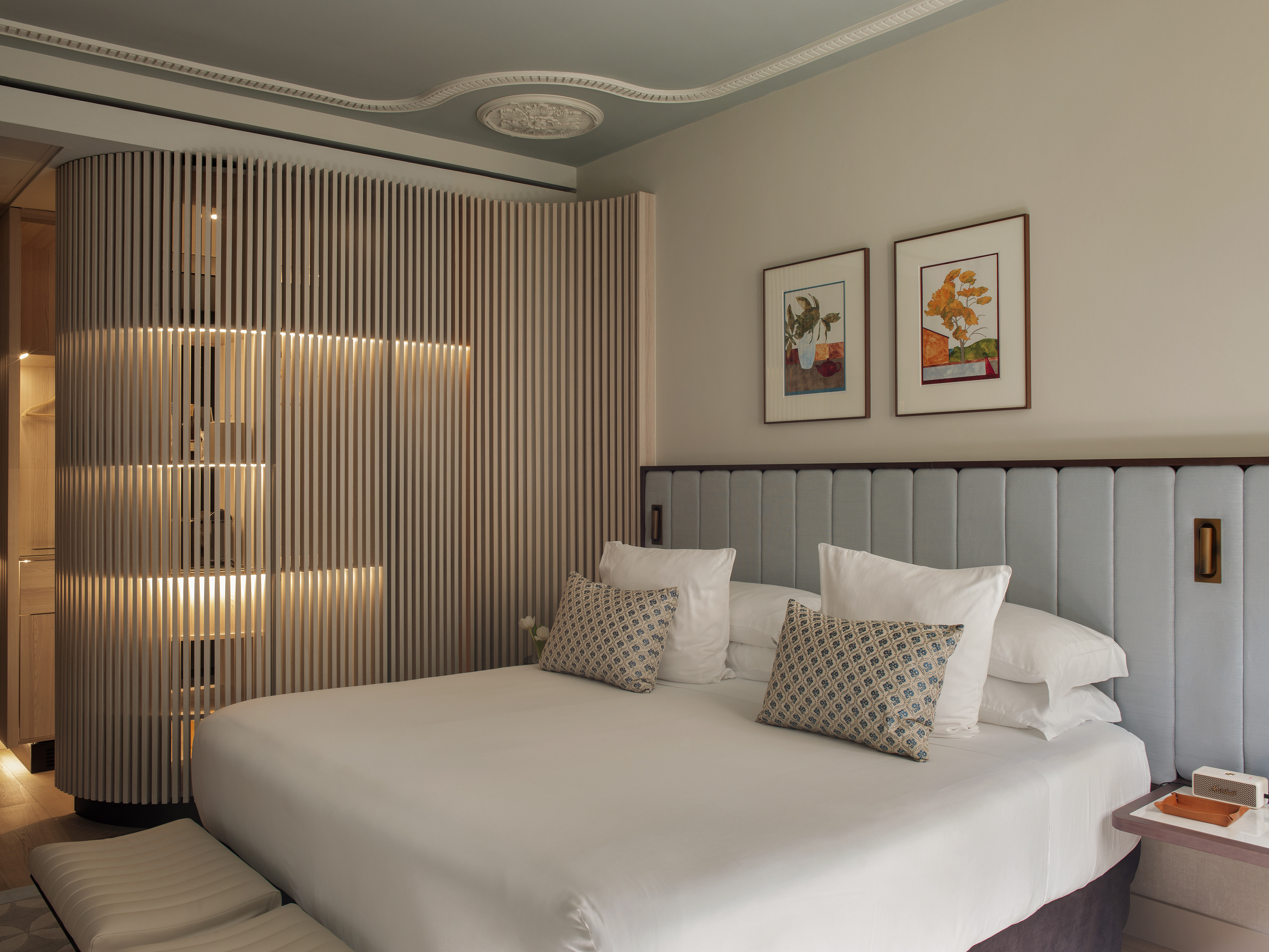

But rather than submitting entirely to the sobriety of Noucentisme, Alvarez says his team also wanted to bring a touch of fun to the space, with the curved, organic shapes of the coffee table, chaise longue and wooden minibar unit making a break from the straight lines. Cambó’s gardens inspired the patterns embroidered into the cushions and the sides of leather-seated hexagonal stools.
The rugs feature abstract, geometric patterns, while other designs are inspired by original pieces from Cambó’s home, such as the wooden boiserie in the walls, the cornices in the ceiling and the double-doored, fold-out mirrors. There are also talks of opening the Cambó residence and garden to the public - but in the meantime, there’s a new rooftop bar right by them, while the family’s original grand library is used for literary events.
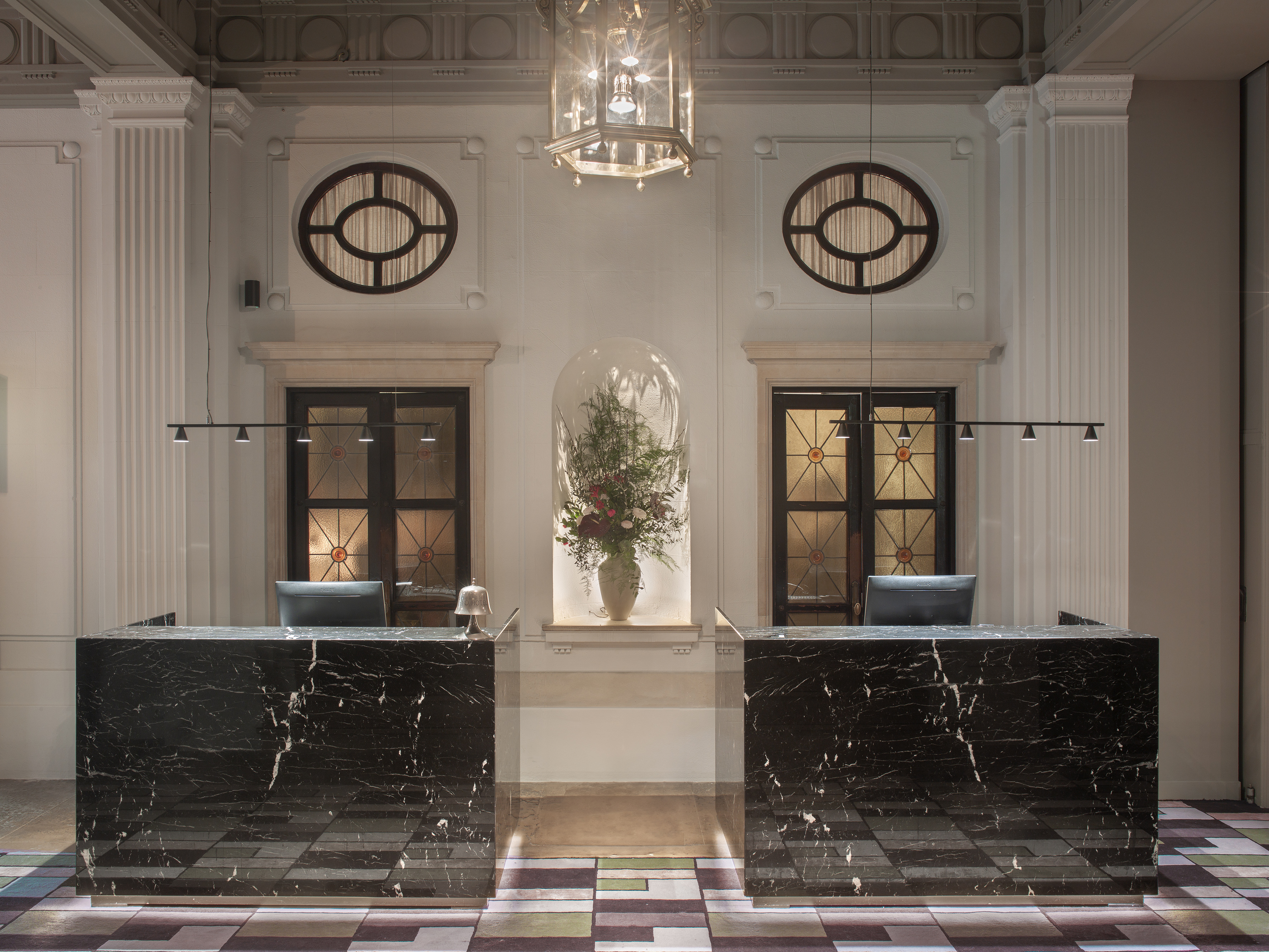
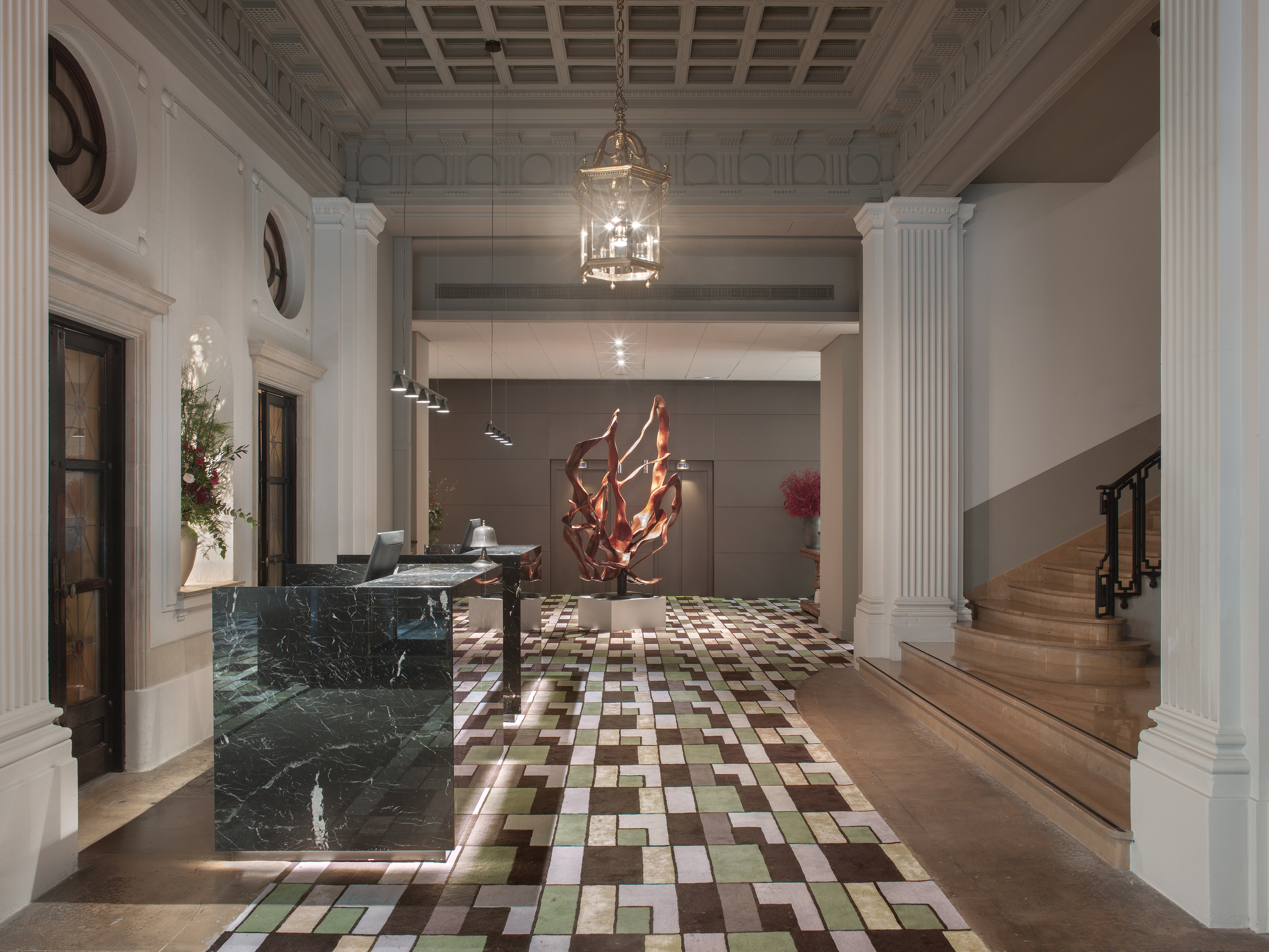
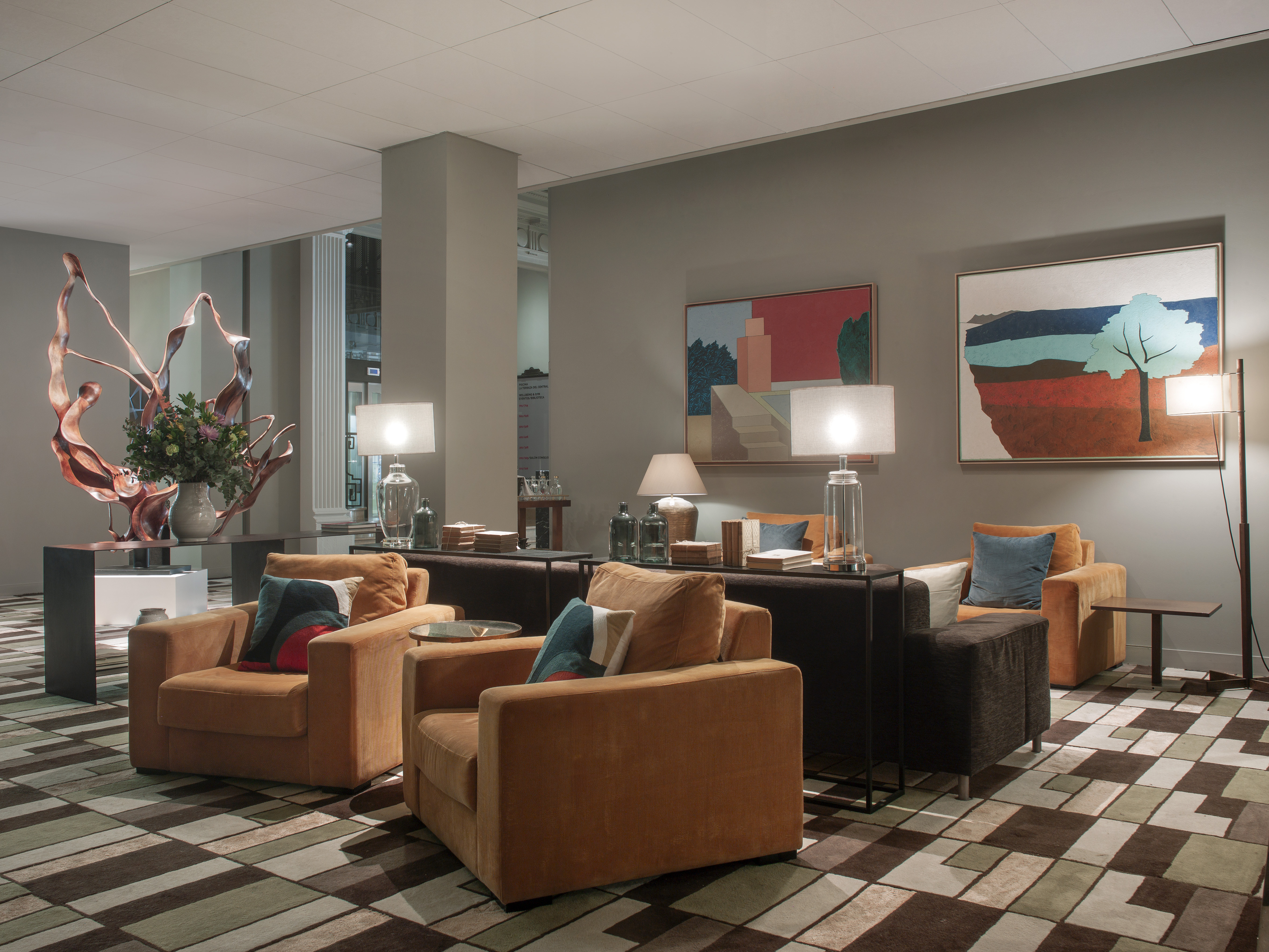
Grand Hotel Central is located at Via Laietana, 30, Barcelona, grandhotelcentral.com







